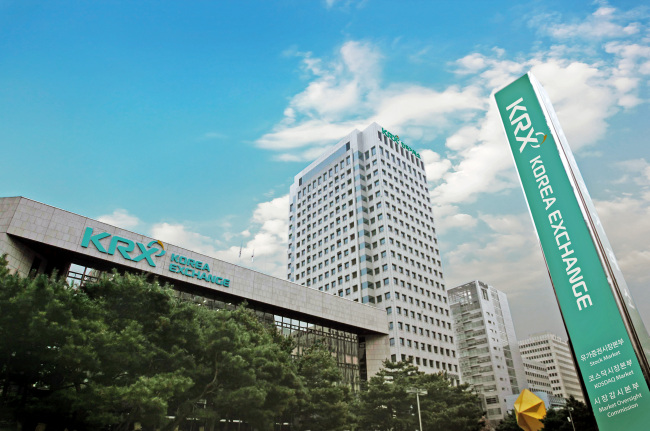After Barclays created structured debt security products called exchange-traded notes in 2006, the Korea Exchange in November 2014 opened markets to trade the structured products to meet growing demand for high-return investments amid low key rates and an aging society.
Three years later, the market operator has seen visible growth of its ETN market, on the back of the sole market operator’s efforts to diversify the types of products, ranging from ones designed to hedge losses to those with leveraged returns.
 |
(The Korea Exchange) |
The accumulated volume of ETNs issued on the market jumped tenfold to 4.86 trillion won ($4.47 billion) as of October, from 466.1 billion won as of the end of 2014, according to the KRX. The market trades 178 listed ETNs, up 17 times compared to 2014.
Furthermore, in 2017, the transaction volume per day jumped to 33.9 billion won as of October, skyrocketing 154 times that of the daily average in 2014. In October, the market saw daily transactions worth 70.7 billion won.
In addition, the market operator saw the entry of foreign investors, while lowering dependence on individual investors. In October, offshore investors took up nearly 2 percent of ETN market investment. There was zero offshore investment until 2015.
Individual investments accounted for 32.7 percent of total investments as of October, 18 percentage points lower than that of 2015.
However, the market operator underscored in a recent release the need to increase investor awareness for stable capital influx, adding that developing a signature product to represent the market would also be key.
The KRX added it has sought to diversify bond instrument issuers. Samsung Securities, the fourth-largest securities firm in equity capital, takes up 53.6 percent of transactions on the ETN market.
The KRX operates various markets, including the stock markets Kospi and Kosdaq, as well as other markets that trade bonds, derivatives and commodities such as oil and gold.





![[Weekender] Korea's traditional sauce culture gains global recognition](http://res.heraldm.com/phpwas/restmb_idxmake.php?idx=644&simg=/content/image/2024/11/21/20241121050153_0.jpg)


